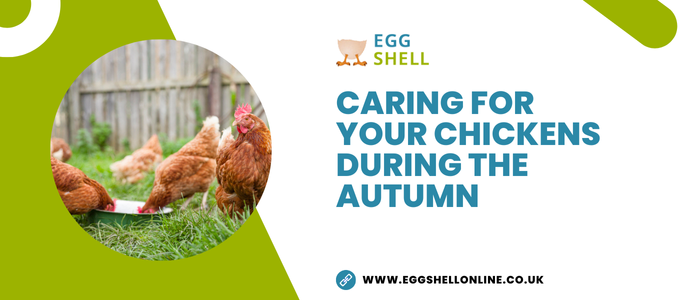The changing seasons will often mean you need to make adjustments to your care routine. Paying close attention to your chickens and their behaviour will help you to adjust their care. Autumn is a time when the days are getting shorter, and you might be faced with unpredictable weather.
While it might be an unpredictable time, there are steps you can take to ensure your chickens are happy and healthy during this time. You can also ensure they are ready for the winter months ahead.
Shorter sunlight hours
Perhaps the first thing you will notice is the shorter sunlight hours. As the days become shorter, you might notice egg laying frequency slows down. This is because chickens need around 14 hours of sunlight to help them to lay eggs naturally. In the winter, they will naturally slow down, but this isn’t cause for concern.
While some will install artificial light sources to help stimulate egg production and keep the chickens warm, this can also be quite stressful if the chickens are exposed to prolonged artificial sunlight. Instead, you can allow the seasons to determine the laying rate and focus on keeping your chickens healthy.
Increase protein requirement
Chickens will shed their downy feathers during the autumn months and start growing new feathers to keep them warm throughout the winter. To help support this transition, you should supplement their food with a source of protein.
Protein is the main building block of life and is also the main component in chicken feathers. By adding extra protein to their feed, you can ensure that your chickens head into the colder months well prepared for what lies ahead.
Check your coops
The autumn is a great time to review your chicken coops and make sure they are weathertight and ready for winter weather. You might want to add additional insulation by adding sawdust to the bottom of the coop or packing sawdust in between the coop and the ground.
Chickens are well adapted to cold weather and have a number of behaviours that will help to keep them warm when the temperature drops. You shouldn’t need to heat your chicken coops except in the most extreme weather conditions. Remember that heating your coops will lead to an increase in moisture that could allow bacteria to thrive.
Feeding your chickens in the evening will help to keep them warm through the night as this activity will help to keep them moving. They will also roost together and flap their wings to keep warm, so there should be no reason to worry about your chickens getting too cold provided they have a dry and wind proof coop.
Dealing with moulting
As mentioned above, chickens will shed their feathers all year round, but it can be worse during the autumn as the temperature drops and they grow a thicker layer of feathers. Stick to your usual cleaning routine to help keep your coops clean and hygienic. Increasing their protein will ensure they are able to grow the feathers they need to keep warm.
Protecting against predators
Foxes are a threat all year round, but the shorter days could mean less visibility on your chicken coops. Review your chicken enclosures regularly and look for signs that foxes are trying to force their way in.
Foxes are sensitive to scents like vinegar and citrus, so these are popular natural deterrents to foxes getting too close to your chicken coops. Make it a habit to regularly check your coops for signs that foxes are nearby.
Final thoughts on caring for chickens in the autumn
Chickens are very hardy animals and can cope with the changing seasons. The best thing you can do for them is to ensure you supplement their diet with enough protein to support new feather growth and continued egg laying. You can also protect them from the elements and ensure their coop remains warm and dry throughout the winter.

